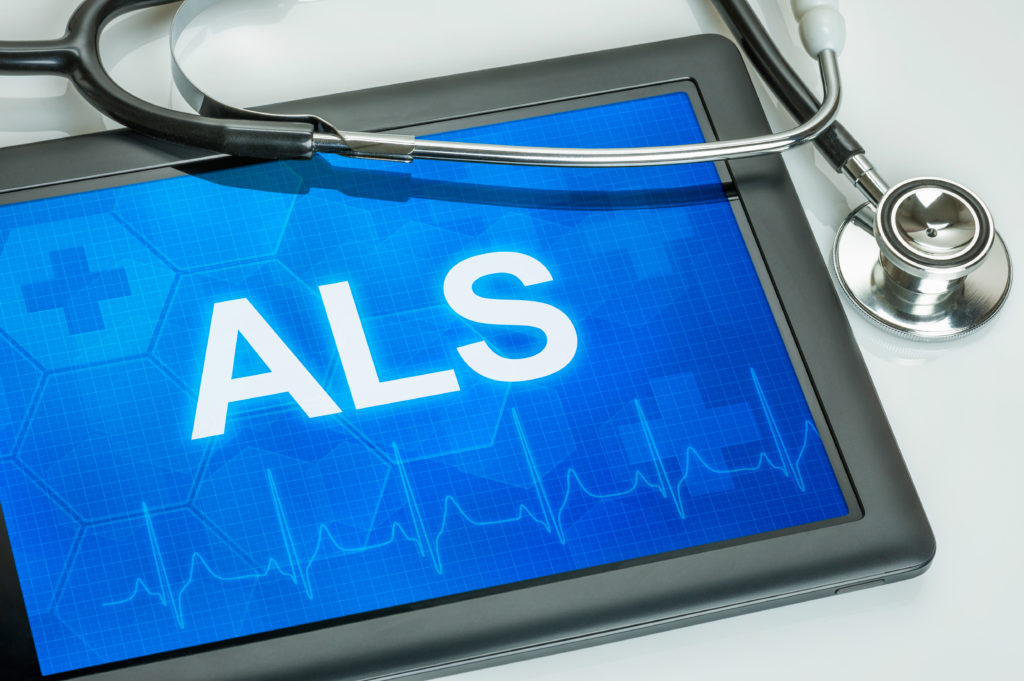Scientists are now exploring new therapeutic approaches for the treatment of AS
The nerve disease amyotrophic lateral sclerosis (als) is already known for over 100 years, but there is still no therapy. Scientists now explore therapeutic approaches against the disease, many people, especially since the so-called “Ice Bucket Challenge”.
Incurable Nerve Disease
The neurodegenerative disease amyotrophic lateral sclerosis (als), can lead to, among other things, violent muscle twitching, muscle weakness, and cramps, leads to the demise of motor nerve cells and thus to steadily progressive paralysis. The relatively rare disease – approximately three out of every 100,000 people are affected annually new is not yet curable. Although there have been AS prominent patients such as the late physics Professor Stephen Hawking and the “Ice Bucket Challenge” in the summer of 2014, well-known, however, for about 100 years, a well-known disease is still not curable.

The disease usually runs within a short period of time deadly
In most cases, the disease of the Central nervous system within three to five years, leads to the onset of the Disease to death.
Only a few people can live, such as the astrophysicist Steven Hawking for decades with the rare disease.
Scientists at the Technical University (TU) of Dresden, and colleagues have now found ways to reduce the death of nerve cells and explore therapeutic approaches for the treatment of AS.
Symptoms AS muscle weakness and paralysis
What actually happens in the body of als patients?
In a communication from the TU Dresden will be explained, are controlled by the muscles and hence the movement of the body of special nerve cells, the motor neurons.
These die in the course of the disease after the other. With progression of symptoms THAN to suffer the patient of increasing muscle weakness and paralysis, to speech, movement, and swallowing disorders and everyday life severely.
But what processes lead to the death of nerve cells? The causes that lead to the death of the nerve cells, are not yet fully known.
It is investigated that changes in the behavior of certain proteins in direct connection with AS.
One of these is the RNA-binding Protein FUS (FUsed in Sarcoma), which plays within the cells, a crucial role: It regulates genetic messengers and influences the Interaction of various proteins.
Mutations in the FUS Protein lead to buildup and clumping of the FUS Protein in the cytoplasm, resulting in one of the most aggressive arises AS variants.
The death of the nerve cells is reduced
Lara Marrone and Jared stern Eckert from the centre for Regenerative therapies Dresden (CRTD) of the TU Dresden, together with other scientists, found scientists from Germany, Italy, the Netherlands and the USA that the interactions between the RNA-binding the protein more strongly to the emergence of AS a disease contribute, as far as is known.
In its recently in the scientific journal “Acta Neuropathologica” published work, the researchers showed the team that the interactions of damaged FUS proteins with other proteins disturb the balance (homeostasis) of the RNA-binding proteins, which contributes significantly to the Degeneration of the nerve cells.
In addition, the scientists showed that the drugs induced degradation of cell’s own proteins (Autophagy) is slowing down the pathological processes, which may have their cause in the incorrectly FUS accumulated Protein.
According to the figures, the induced Autophagy not only be saved, the RNA-binding proteins, but also the death of the nerve cells is reduced.
This improvement has been developed by researchers in cell culture experiments with reprogrammed stem cells (iPS cells) from patients and in a model organism, the fruit fly is confirmed.
Protein removal machine is affected
“Error accumulated FUS Protein affect the protein degradation machine, so that the FUS in the cytoplasm of the cells to accumulate,” said Lara Marrone, PhD student at CRTD, and the main author of the study.
“This triggers a vicious circle that hinders the cellular quality control systems for proteins, which are important for the maintenance of Protein balance responsible,” says the scientist.
“We suspected, therefore, that enhancement of Autophagy could also improve the Situation of other RNA-binding proteins.”
The extent to which enhanced Autophagy represents a potential therapeutic approach for als patients, the research will examine the star Eckert group at the CRTD.
A further aim of the research is that RNA-binding proteins samples in Patients as a Biomarker for the disease.
Cure of neurodegenerative diseases
Jared stern Eckert and his Team will use induced pluripotent stem cells (iPS cells) to study neurodegenerative diseases such as als and Parkinson’s disease.
You are working at the CRTD, where researchers from more than 30 countries, to decipher the principles of cell – and tissue regeneration and their use for the diagnosis and treatment of diseases to fathom.
The CRTD linked the laboratory and the clinic, networked scientists with Physicians, and has specialist knowledge in stem cell research, genome editing and tissue regeneration for a goal:
The cure of neurodegenerative diseases such as ALS, Alzheimer’s and Parkinson’s diseases, haematological diseases such as leukaemia, metabolic diseases such as Diabetes as well as eye and bone diseases by means of new diagnostic and therapeutic possibilities. (ad)






